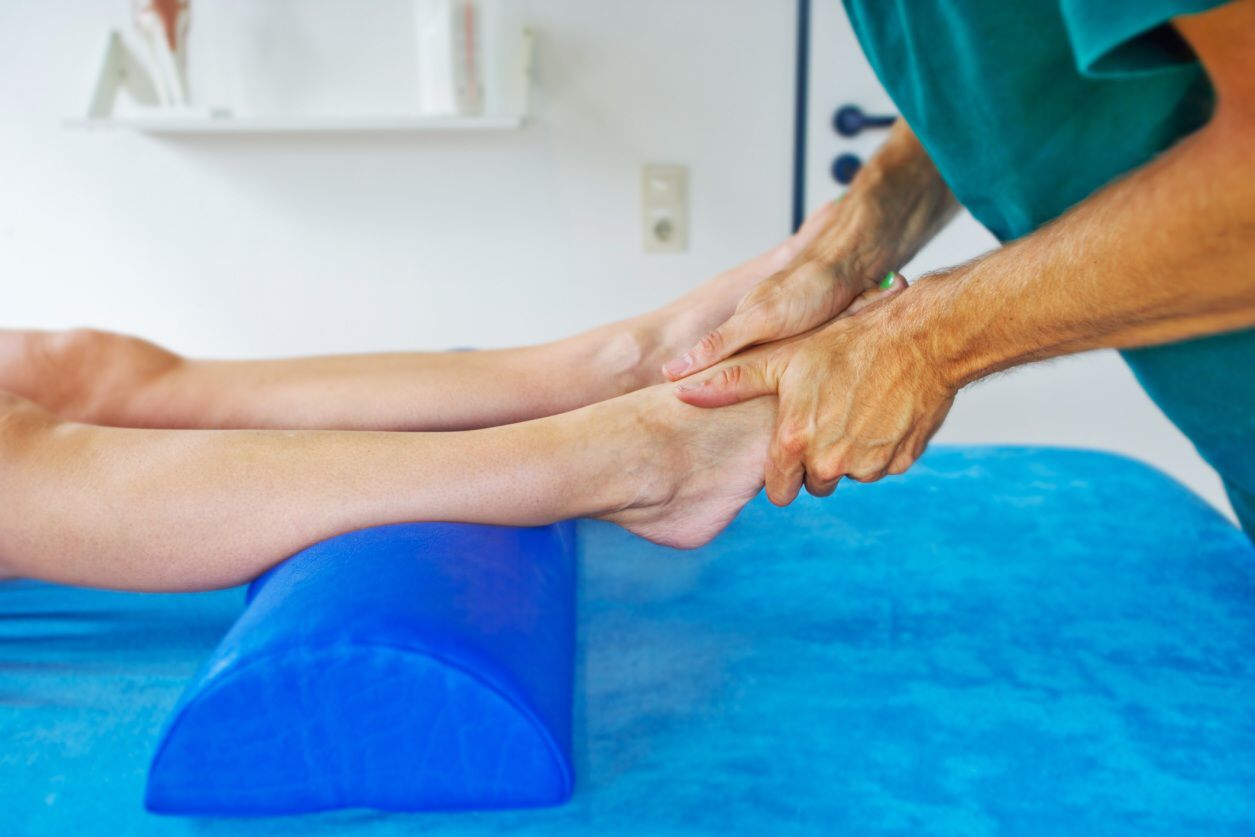Physical Therapy After Fracture Hardware Removal


Baselines Evaluations
After fixation hardware has been removed, you will most likely be wearing a cast or removable immobilizer to help stabilize the healing bone. Any time that a limb is immobilized for a prolonged period of time, there will inevitably be some level of muscle atrophy (wasting) and/or the loss of range of motion of a joint.
If physical therapy is advised, you would undergo an evaluation to provide baseline measurements of some or all of the following:
- Strength
- Flexibility
- Range of motion (ROM)
- Balance and proprioception
These measurements help the physical therapist formulate a rehabilitation plan and measure improvement as you progress through recovery.
Treatment Options
The most common reason for hardware removal after a fracture is pain or the loss of mobility and ROM. Physical therapy would therefore likely focus on regaining ROM of the injured extremity using various physical therapy techniques.
Gait Training
If you have had hardware removed from a lower extremity like an ankle or knee, then you will most likely need a walker or crutches after your surgery. Your physical therapist can help progress from walking with two crutches to one crutch, to a cane, and then to no assistive devices. This is part of a rehabilitative effort known as gait training.
Gait training may also include side-stepping, stair-climbing, and navigating obstacles to target different muscle groups and enhance mobility.
ROM and Strength Training
There may be loss of ROM if the limb is immobilized after hardware removal. To minimize the loss, the physical therapist may employ a variety of physical therapy exercises. Depending on the injury, these may include:
- Toe points
- Ankle pump
- Passive knee flexion (bending)
- Hip abduction (pressing outward) or adduction (pressing inward)
After the cast or immobilizer is no longer needed, resistance training and weight-bearing exercises may be added, increasing in intensity and duration week on week.
Scar Mobility
After surgery, you will have a surgical scar where the surgeon cut through your skin and soft tissues to remove the hardware.
Manual techniques like myofascial release can aid with healing and help reduce the amount of scar tissue that develops. The excessive buildup of scar tissue can lead to tissue contraction and the formation of adhesions (in which tissues stick together).
Conclusion
In conclusion, hardware removal after a fracture is a common procedure that requires a structured rehabilitation program to regain strength, flexibility, and mobility. Physical therapy plays a crucial role in this process, and a well-designed program can help you achieve optimal outcomes.
Frequently Asked Questions
Q: Why is hardware removal necessary after a fracture?
A: Hardware removal is necessary to alleviate pain, improve mobility, and prevent complications.
Q: What is the purpose of physical therapy after hardware removal?
A: Physical therapy helps to regain strength, flexibility, and mobility, and to prevent complications such as muscle atrophy and loss of range of motion.
Q: What are some common physical therapy exercises used after hardware removal?
A: Common physical therapy exercises used after hardware removal include toe points, ankle pump, passive knee flexion, hip abduction, and hip adduction.
Q: How long does the rehabilitation process typically take?
A: The rehabilitation process typically takes several weeks to several months, depending on the severity of the injury and the individual’s progress.
Q: What are some potential complications of hardware removal?
A: Potential complications of hardware removal include infection, nerve damage, and blood vessel damage.
Recent Posts
Sphinx Pose Is the Mobility Stretch Your Back Has Been Aching For
On the Flip Side: The Benefits and Drawbacks of Sphinx Pose When to Avoid Sphinx…
Are mental health conditions overdiagnosed in the UK?
Mental Distress is Under-Diagnosed – But Over-Medicalised Susan McPherson, Professor in Psychology and Sociology, University…
10 Foods That Deliver More Vitamin C Than an Orange
1. Red Bell Peppers One cup of red bell pepper provides 142% of the RDA…
Watch Brian Shaw Use Custom Training Equipment to Fit His Massive Frame
A Big Man Requires Some Big Machines Imagine going through a transformation where you lose…
Why I Mourn My Childhood Home
Grief: The Loss of a Childhood Home Grief can hit us in powerful and unanticipated…
Best Time to Take Fiber Supplements
Timing for Consistency and Health Goals Fiber supplements can be a valuable addition to a…


